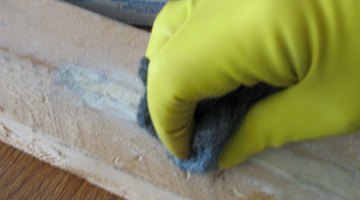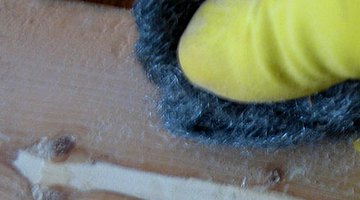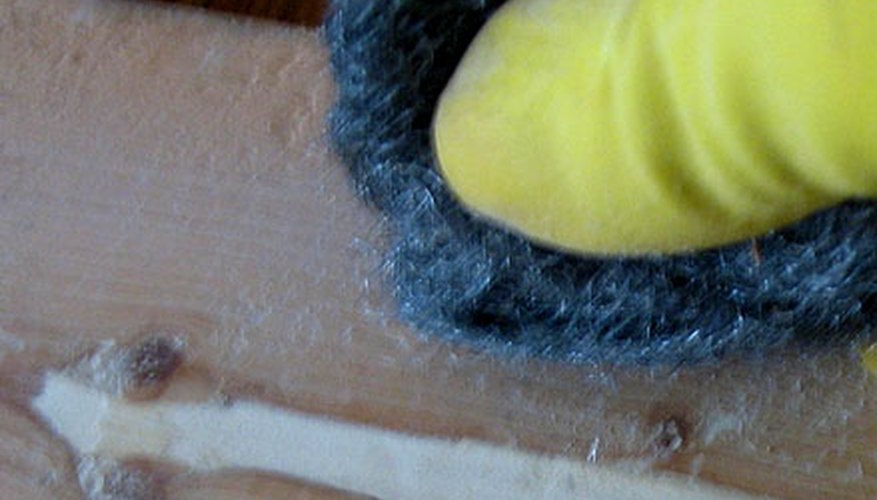Wood filler, the type of putty used for filling large defects in wood, when dry is usually harder and more dense than the wood that surrounds it. Although wood filler can be sanded, the softer surrounding wood is more easily removed, resulting in the filled surface remaining raised higher than the wood. This can be a problem in small areas with high visibility, like filled gaps at the edges of inlays or repaired joints. The following techniques can be used to remove wood filler to match the surface plane of the wood.
- Wood filler, the type of putty used for filling large defects in wood, when dry is usually harder and more dense than the wood that surrounds it.
Check the label on the packaging of the wood filler or putty. There are two basic types of wood filler--water-based and chemical solvent-based. Water-based fillers will often have the notation "Cleans up with water" and /or the statement "water based." Chemical solvent-based fillers will have listings of chemical components and a warning to avoid breathing the fumes, and to use only in well-ventilated areas.
For water-based filler use denatured alcohol or rubbing alcohol. For chemical solvent-based fillers use acetone, white spirit,or lacquer thinner. Test the technique with the chosen solvent on another piece of filled scrap wood before applying it on your main project.

Put on a pair of thick rubber or plastic gloves and apply the solvent directly to the surface of the wood filler, by first dipping the end of a clean shop towel or rag into the solvent, and then rubbing it lightly over the surface of the filler.

Use a piece of steel wool to lightly abrade or buff the surface of the wood filler. Change the direction of your strokes frequently to more evenly reduce the surface.
- For water-based filler use denatured alcohol or rubbing alcohol.
- Use a piece of steel wool to lightly abrade or buff the surface of the wood filler.
Continue the process in Steps 3 and 4, applying small amounts of solvent when the previously applied solvent has evaporated or dried. Continue abrading the surface of the wood filler until it is at the same surface plane as the wood.

Remove any residue of the filler from the surface of the wood by using the cloth dipped in the solvent to wipe it away.
TIP
Many manufacturers of wood filler also separately sell solvent for their specific wood filler products, which will have superior results when used with this technique. Another type of liquid wood filler, used for filling in pores of the wood's surface prior to stain and finish, can be removed using the same technique on a larger scale, followed by sanding with a fine-grain sandpaper.
WARNING
Wear thick, protective rubber or plastic gloves whenever using any chemicals or solvents. Always wear safety glasses or goggles. Work only in well-ventilated areas and avoid breathing any fumes or vapours. Use caution when working with any solvents. Read the safety warnings for the solvents and keep them out of the reach of children.
